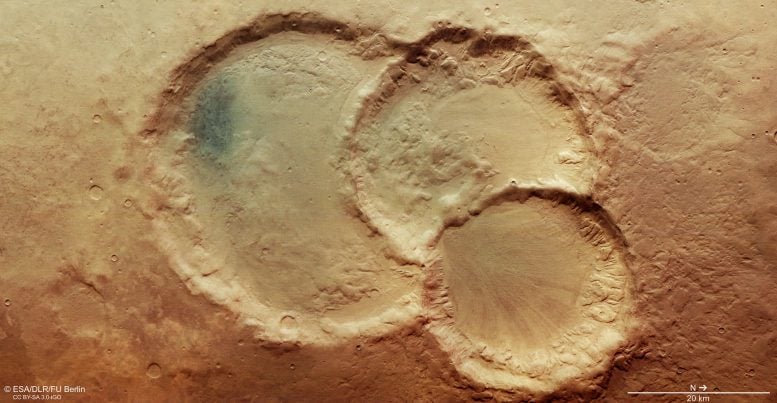
This image shows a triple crater in the ancient Martian highlands. The largest crater measures 45 km across, and the smallest 28 km. There are also signs of other sizeable craters, such as the round patches of sunken surface seen to the top right and bottom left. Credit: ESA/DLR/FU Berlin, CC BY-SA 3.0 IGO
Mars is covered in intriguing scars – some of the most prominent being impact craters. A particularly unusual example is shown in this new image from ESA’s Mars Express: an ancient triplet comprising not one but three overlapping craters.
The crater triplet is located in an especially old part of Mars’ southern hemisphere known as Noachis Terra. This region was heavily cratered during the Noachian era, an ancient time about four billion years ago in Mars’ history in which huge numbers of asteroids and comets flew inwards to crash into the planet’s surface. Some of the features created by these collisions remain intact on Mars today and, as they formed during the very earliest days of the Solar System, are of particular interest to scientists seeking to know more about our planetary neighbor and its past.
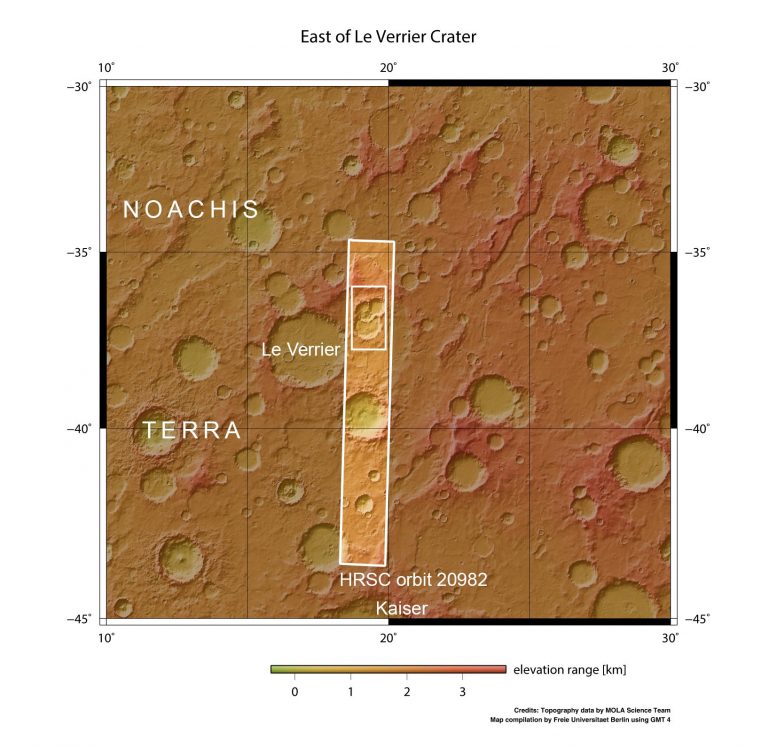
This image shows a triple crater in the ancient Martian highlands – more specifically, the region of Noachis Terra – in a wider context. The area outlined by the bold white box indicates the area imaged by the Mars Express High Resolution Stereo Camera (HRSC) on August 6, 2020, during orbit 20982. Credit: NASA MGS MOLA Science Team
Signs of chaotic Noachian processes and events are seen especially clearly in Mars’ southern highlands, which are peppered with old, time-worn craters. ESA’s Mars Express has imaged many craters in this region, from the severely eroded Greeley Crater, named after the American geologist Ronald Greeley, to the dune-patterned Neukum Crater, named after one of the founders of the Mars Express mission (and the former Principal Investigator of the spacecraft’s High Resolution Stereo Camera (HRSC), the camera responsible for this new image).
This image shows a triple crater found just east of a better-known feature named Le Verrier Crater, which spans nearly 140 km across. By contrast, the three depressions seen here are somewhat smaller; the largest measures 45 km across, and the smallest 28 km.
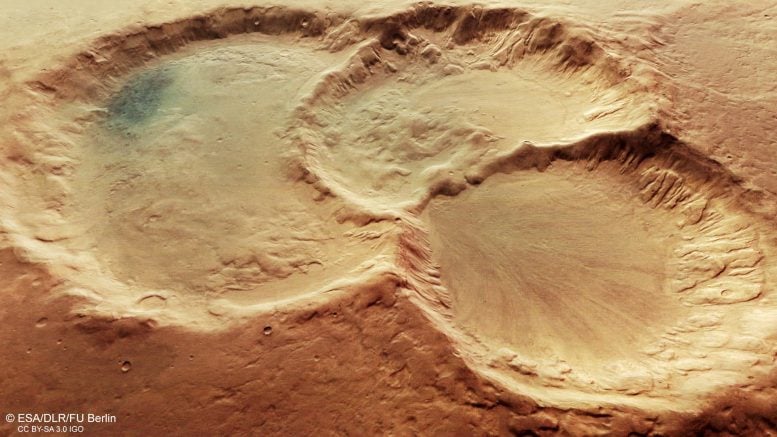
This image provides a perspective view of a triple crater in the ancient Martian highlands. It comprises data gathered by ESA’s Mars Express on 6 August 2020 during orbit 20982. The ground resolution is approximately 15 m/pixel and the images are centered at about 19°E/37°S. This image was created using data from the nadir and color channels of the High Resolution Stereo Camera (HRSC). The nadir channel is aligned perpendicular to the surface of Mars, as if looking straight down at the surface. HRSC stereo imaging was then used to derive the digital elevation model (DTM) upon which this oblique view is based. Credit: ESA/DLR/FU Berlin, CC BY-SA 3.0 IGO
How would such a crater triplet form? One possible explanation – and that thought to be most likely – is that the impactor broke into three before hitting the ground, forming a crater trio upon impact. Not all ‘multiple impactors’ leave such clear and neat features in their wake, with many instead showing elongated troughs, non-circular hollows lying closely side-by-side, or only partially overlapping basins. Another explanation could be coincidence: at different points in time, three separate impactors could have hit Mars’ surface in this location, creating a neat superposition of craters completely by chance.
Interestingly, if the impactor did indeed fragment and break apart, this may imply that the atmosphere of Noachian Mars was far denser – and harder to penetrate – than it is now. This points towards an early Mars that was far warmer and wetter than the cold, arid world we see today. Observations from numerous missions are supporting this view and returning evidence that water once flowed across the Red Planet in large amounts, revealing features such as old river valley networks and large lake basins thought to have formed in the Noachian period.
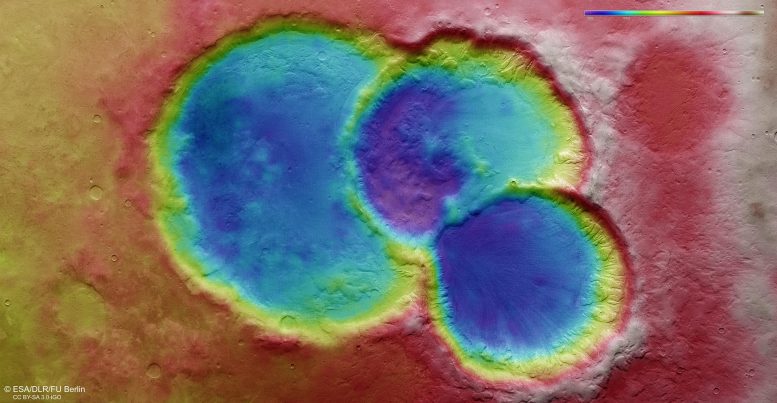
This colour-coded topographic image shows a triple crater in the ancient martian highlands, based on data gathered by the Mars Express High Resolution Stereo Camera (HRSC) during orbit 20982 (6 August 2020). This view is based on a digital terrain model (DTM) of the region, from which the topography of the landscape can be derived; lower parts of the surface are shown in blues and purples, while higher altitude regions show up in whites, yellows and reds, as indicated on the scale to the top right. North is to the right. Credit: ESA/DLR/FU Berlin, CC BY-SA 3.0 IGO
Like many of the ancient and eroded craters in Mars’ southern highlands, these three craters have flattened rims, shallow floors, and have been filled with sediment in the four billion years since their formation. There is also evidence of ice here – the smallest crater has marks that are typically created as ice and debris creep across a surface, similar to how mixed rock-and-ice glaciers or debris-covered ice glaciers move in alpine regions of Earth.
This frame may once have contained other craters, as indicated by the round patches of sunken surface to the top right and bottom left. In fact, despite the cratered nature of Noachis Terra, the environment around this triplet is surprisingly smooth for such ancient terrain. Only a handful of small surrounding craters appear to have clear, sharply defined rims and bowls, indicating that they are relatively young and have not yet begun to erode in earnest. Overall, it seems that older craters in this area have ‘melted down’ into the surface – a phenomenon that is, again, due to ice.
As ice just under the surface of Mars flows and melts over many millions of years, the soil becomes softer. This soft, ice-rich soil subsides more quickly and fills up indentations and depressions more readily, contributing to the smooth appearance of this part of Noachis Terra. This suggests that there must have been a large amount of water present on Mars, at least during the Noachian period, capable of producing a glacier-like flow of abundant ice.
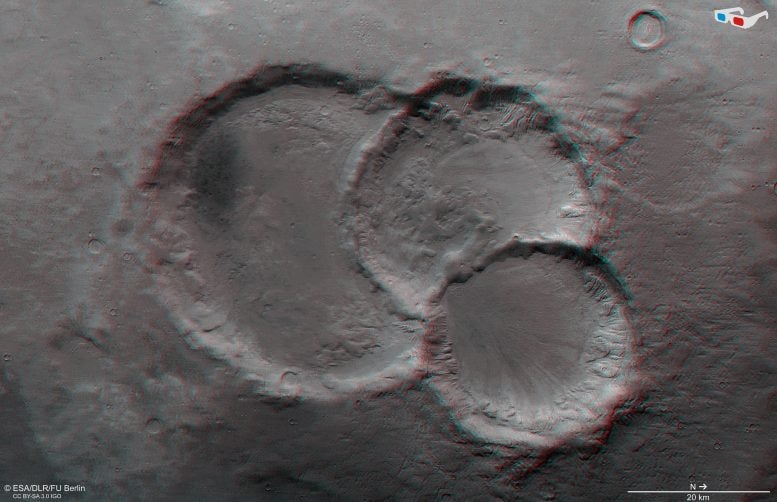
This image shows a triple crater in the ancient Martian highlands in 3D when viewed using red-green or red-blue glasses. This anaglyph was derived from data obtained by the nadir and stereo channels of the High Resolution Stereo Camera (HRSC) on ESA’s Mars Express during spacecraft orbit 20982 (6 August 2020). It covers a part of the Martian surface centered at 19°E/37°S. North is to the right. Credit: ESA/DLR/FU Berlin, CC BY-SA 3.0 IGO
Understanding the history of Mars, and mapping the features covering the planet’s surface in detail, is a key objective of Mars Express. The spacecraft has been exploring the Red Planet since its launch in 2003, and is gearing up to collaborate with a number of new missions that have joined – or will soon join – the spacecraft at Mars. The ESA-Roscosmos ExoMars Trace Gas Orbiter (TGO) arrived in 2016, and the ExoMars Rosalind Franklin rover and its accompanying surface science platform are scheduled for launch in September 2022.
Together with Mars Express, these missions will work to fully characterize our neighbor, to help us not only understand more about Mars, but, by comparison, more about the history and nature of our home in the Universe.



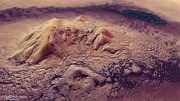

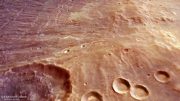
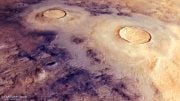
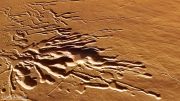
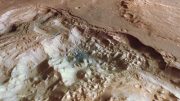
They are not intriguing when you look at them through the lens of simple physics. I know there is resistance to the body of work that adequately and accurately explains these “intriguing” formations but the day is coming where you’re going to have to stop clinging to models just because the crowd tells you to and start considering your model is inaccurate or inadequate.
These formations are caused by electrical arcing. This is a high energy electrical arc sweeping across the surface creating crater chains. Electric Universe explains it. Thunderbolts Project’s documentary “The Lightning Scarred Planet Mars” and “Thunderbolts Of The Gods” clear it right up. Unless you are willing to be educated and broaden your horizons and consider another explanation than “flooding” and “swamp gas” and “volcano” to every single thing you don’t understand, and start considering the role real electricity plays in a real electrically charged atmosphere then you will continue losing credibility and looking like idiots when you pass of nonsense explanations people can see plain as day is no such thing.
Clearly, the “electrical arcing” process is something that occurs in the early part of a terrestrial planet’s history, when, very conveniently, no one is around to witness it. If it were happening today each of the active volcanoes that are erupting on Earth right now would be looking like an arc welder.